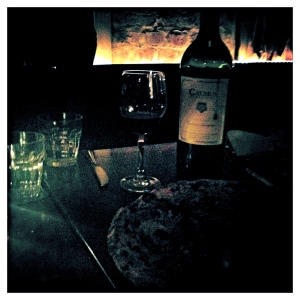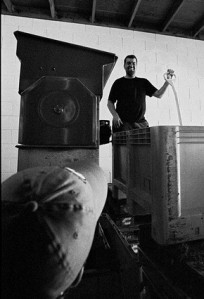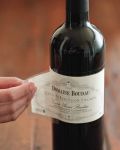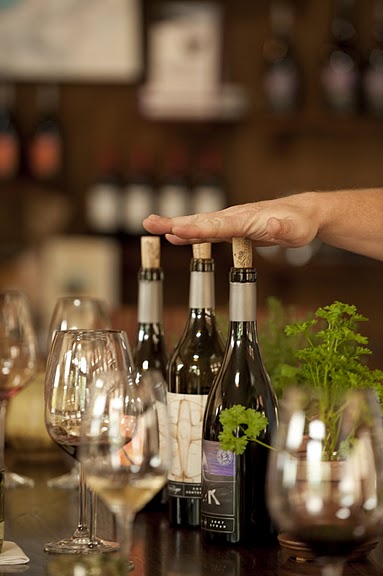I recently received this on my facebook wall:
I am hoping you can help some friends of mine out. A very dear friend from college is getting married this summer and she and her fiancee would like to serve organic wines. Do you have any recommendations?
Where to start? First, I suppose we should start with a definition: Organic wines can be classified into four categories:
- ‘100% organic’ are what they say made from 100% organic certified ingredients wines may not contain added sulfites and must bear the USDA organic label.
- ‘organic’ are 95%+ certified-organic ingredients and may not contain added sulfites and must bear the USDA organic label.
- ‘Made with organic grapes’ are 70%+ certified organic ingredients, some sulfites allowed and the label must indicate the presence of non-organic grapes.
- ‘Made with some organic grapes’ may contain less than 70% organically produced ingredients and over 30% non-organically produced agricultural ingredients and the term “organic” shall only appear in an ingredient statement and the accompanying percentage statement.
So…there are several wineries that use certified organic grapes, but their wines won’t qualify for an ‘organic’ designation for any number of reasons. So beware, label mongers, the wines listed below may or may not have the UDSA organic label. Just sayin’.
For a wedding we have to assume they aren’t looking for a super expensive wine. That said, here are some recommendations:
20$ and under.
Reds: In this category I would start with the $14 Bonny Doon 2009 Contra Central Coast Red Wine. It was recently named one of the SF Chronicle’s Top 100 Wines.
Whites: Sokol Blosser in Oregon is a great, sustainable winery. In 2002 they became the first US winery to receive LEED Certification and they have publish a proper sustainability report (you don’t see that from too many wineries). The Evolution, a blend, at $15 is terrific.
Then there is Barra of Mendocino. They are a a fabulous winery that has been making top notch organic wines for years. They have four wines to consider. Reds: A 2004 Zinfandel that was a Silver Medal Winner in the San Francisco Chronicle for $20 and a a 2006 Sangiovese for $18.Whites: A 2009 Pinot Grigio for $18 and a 2008 Chardonnay for $18. And as an extra treat they have a A 2007 Muscat Canelli dessert wine $16.
And although I haven’t personally tried them, Marc Kauffman, CSW, Certified Sommelier and the Wine Guy at En Vino, recommends: “The Cal Naturale wines that retail for about $12 (1 liter). The Chardonnay is clean and crisp with pleasing acidity and overtones of apple, pear and melon. A very clean wine. The Cabernet Sauvignon has some complexity and up front jammy, berry flavors. Yes, I have tasted them and they are good and good values.”
Over 20$
Whites:
No mention of organic wine is complete with talking about Benziger Family Winery. Mike Benziger was making organic wine before people knew what it was. They make several great wines, but since cost is a consideration, I would go with the 2009 Signaterra Sauvignon Blanc, Casey’s Block at $24 a bottle.
Another solid choice is the Hall Napa Valley Sauvignon Blanc at $22. The Halls have been using an organic approach long ago and recently received our Organic Farming certification. The Sauvignon Blanc was also recently named one of the SF Chronicle’s Top 100 Wines.
Steve Ferree, a wine writer and educator at WineProGuy, recommends Preston of Dry Creek: “Some fabulous wines, all organic. Lou Preston is a fanatic about organic farming for all his crops, grapes, olives and fruits. Even his tractor uses vegetable oil.” Their 2009 Sauvignon Blanc is $22.
Reds:
One of my favorite organic wines comes from Tablas Creek. Their Côtes de Tablas 2008 is $25.00 a bottle. You can’t beat this one at that price.
I know this next wine might blow the wine budget, but if you can afford it (maybe its a small wedding?), I would go for the 2008 Donelan Syrah Kobler Vineyard Green Valley at $45. Its a stunning wine and well worth the money.
Champagne:
Although I hadn’t expected to mention it, Liz Palmer, a wine and travel writer, highly recommends Champagne Fleury Pere & Fils that sells for about $58 a bottle.
A few more things to think about:
- The reality is that there is an abundance of great wine that contain organic grapes but do not carry the USDA Organic label. Organic Wine Find has a searchable database.
- If you are in a state that allows you to, buy directly from the winery. Its better for them and many offer discounts on full case orders.
This is cross-posted at EatDrinkBetter.com.






 To introduce this artisan wine to the VineCrowd community, Two Mile has agreed to offer their finest vintage at an
To introduce this artisan wine to the VineCrowd community, Two Mile has agreed to offer their finest vintage at an 















